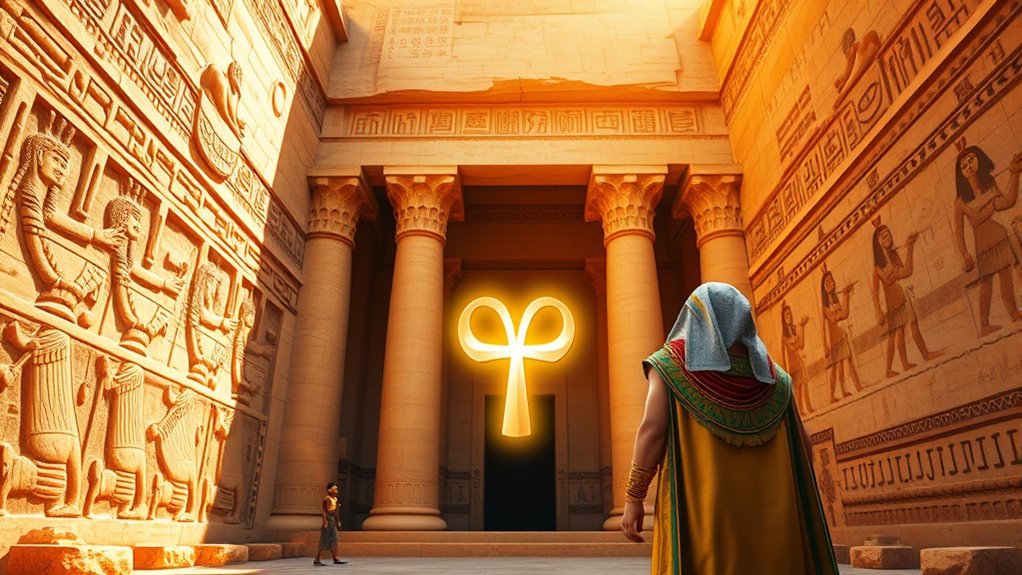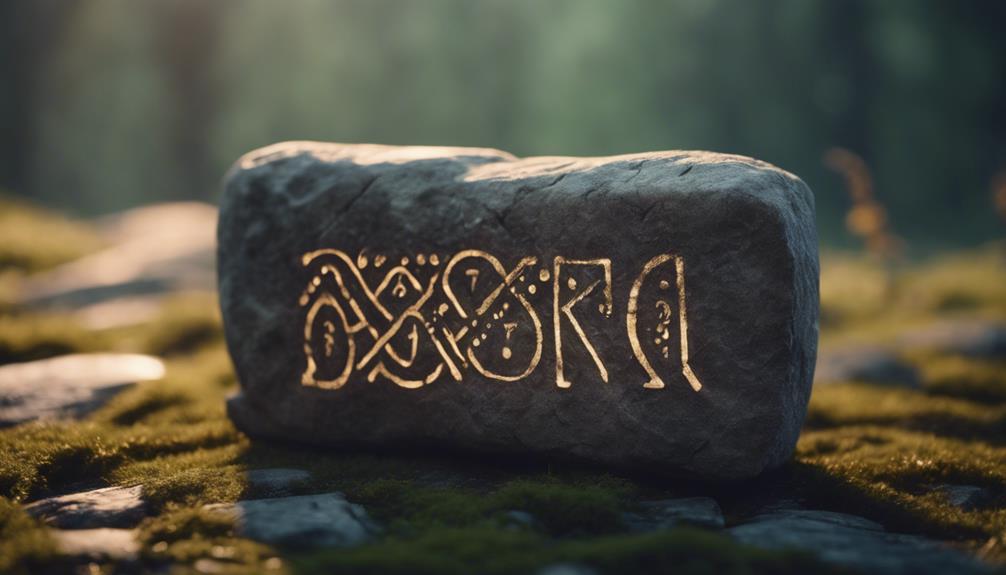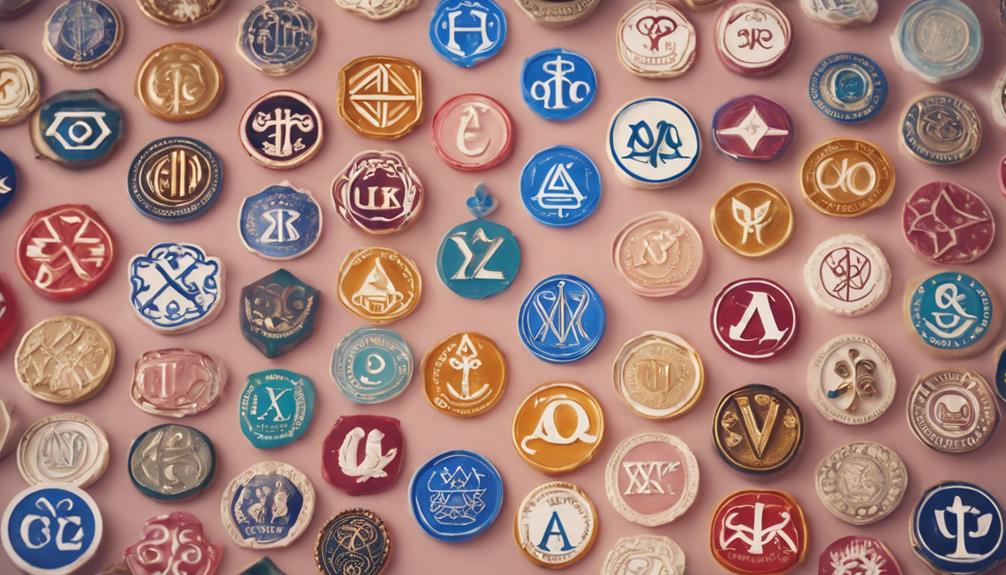The Ankh acts as a bridge between Egyptian life and the afterlife by symbolizing eternal life, divine power, and protection. Wearing or depicting the Ankh connects you to both mortal vitality and spiritual immortality, reflecting the ancient belief in a seamless passage from earthly existence to eternal life. Its shape embodies the link between the physical and spiritual domains, offering insight into how Egyptians viewed life beyond death. Continue exploring to uncover more about its profound spiritual significance.
Key Takeaways
- The Ankh symbolized eternal life, connecting mortal existence with the divine realm of the afterlife.
- It served as a spiritual tool for protection, guiding souls through transition to the afterlife.
- Worn by pharaohs and priests, it signified divine authority and their divine connection to eternal life.
- Its shape represented the unity of life and death, embodying the cycle of rebirth and immortality.
- The Ankh acted as a bridge, symbolizing the link between physical life and spiritual immortality in Egyptian belief.

The ankh, often called the “key of life,” is one of the most recognizable symbols from ancient Egypt. Its shape, resembling a cross with a loop at the top, carries deep symbolism in Egyptian culture. When you see the ankh in jewelry, you’re not just looking at a decorative piece; you’re witnessing a symbol that embodies life, immortality, and divine power. For the ancient Egyptians, wearing ankh jewelry was more than fashion—it was a way to connect with the spiritual world and guarantee protection in both life and the afterlife. The symbolism in jewelry made it a powerful tool for expressing faith, hope, and a desire for eternal life. Pharaohs and priests often adorned themselves with ankhs, emphasizing their divine status and their role as intermediaries between gods and humans. Even today, the influence on modern culture is undeniable. The ankh appears in popular jewelry, art, and fashion, symbolizing not just Egyptian heritage but also universal themes of life and rebirth. Many see it as a talisman, offering spiritual protection and strength, which keeps its relevance alive in contemporary society.
The ankh’s influence on modern culture extends beyond jewelry. It has become a symbol embraced by various spiritual communities, new age movements, and pop culture. You’ll find it in movies, tattoos, and music, often representing eternal life or spiritual awakening. Its association with ancient wisdom and mystical power appeals to those seeking a deeper connection to the universe. This widespread adoption highlights how the ankh has shifted from an Egyptian religious icon to a universal emblem of vitality and spiritual continuity. Its presence in modern artwork and design continues to inspire curiosity about ancient Egypt’s rich spiritual beliefs. The shape of the ankh, with its combination of a cross and a loop, symbolizes the connection between physical and spiritual worlds, reflecting the concept of divine power. The ankh’s shape, simple yet profound, makes it a versatile symbol that can be integrated into many forms of expression, from jewelry to logos. Its symbolism in jewelry specifically underscores the idea that life is precious and eternal, a message that resonates across cultures and ages.
As you explore the significance of the ankh, you realize that it’s more than just a relic of ancient Egypt. It’s a bridge that links the mortal world with the divine, reminding you of the enduring human desire for immortality and spiritual fulfillment. The influence on modern culture keeps this ancient symbol alive, adapting it into new contexts while preserving its core meaning. Whether worn as a necklace or depicted in art, the ankh continues to serve as a powerful reminder of life’s eternal cycle and our ongoing quest for meaning beyond the physical sphere.
Frequently Asked Questions
How Was the Ankh Used in Daily Egyptian Rituals?
You see the Ankh in daily Egyptian rituals as a powerful symbol of life and immortality. During funerary rites, you might hold or wear an Ankh to honor the dead and guarantee safe passage to the afterlife. In temple ceremonies, priests often use the Ankh in rituals to invoke divine power and blessings. Its presence in these practices underscores its importance in maintaining life, health, and spiritual connection in Egyptian culture.
Did the Ankh Symbolize Different Meanings Over Egyptian History?
You’ll find that the ankh’s symbolic evolution reflects its changing religious significance over Egyptian history. Initially, it represented life and essentiality, but as time passed, it also embodied concepts like eternal life and divine power. Its meanings shifted across different periods, symbolizing protection, rebirth, and the gods’ authority. This dynamic symbolism highlights how the ankh remained a crucial icon, adapting to the spiritual needs and beliefs of ancient Egyptians.
Were Specific Classes or Groups Associated With the Ankh?
You notice that certain classes, like priests and royalty, often associate with the ankh. Priests use its symbolism in rituals, emphasizing spiritual power, while royal insignias incorporate the ankh to highlight divine authority. These groups link the ankh to life, immortality, and divine connection, reinforcing their status. As a result, the ankh becomes a symbol of both spiritual leadership and royal legitimacy across Egyptian society.
How Did the Ankh Influence Egyptian Art and Sculpture?
You notice how the ankh influences Egyptian art and sculpture through its symbolic artistry and religious symbolism. Artists incorporate the ankh into statues, paintings, and jewelry to represent life and divine power. Its frequent depiction in sacred scenes emphasizes its spiritual significance, making it a key element that bridges human existence with the divine. This powerful symbol shapes the overall aesthetic and meaning conveyed in Egyptian visual culture.
Are Similar Symbols Found in Other Ancient Cultures?
Imagine a universal language, where symbols speak across borders—this is cross cultural symbolism. You’ll find similar ancient religious icons in other cultures, like the Christian cross or the Hindu Om, echoing the Egyptian ankh’s significance. These symbols represent life, power, or spiritual connection, showing how different civilizations used visual cues to express profound beliefs. They reveal shared human desires for understanding life and the divine beyond cultural boundaries.
Conclusion
So, there you have it—by clutching the ankh, you’re pretty much holding the ultimate life hack that even the gods would envy. It’s like a VIP pass to eternal happiness and endless Egyptian parties in the afterlife. Who knew that a simple looped cross could open the secrets of existence and make death seem just a minor inconvenience? Next time you see an ankh, remember: it’s your ticket to forever, or at least, a really fancy necklace.











